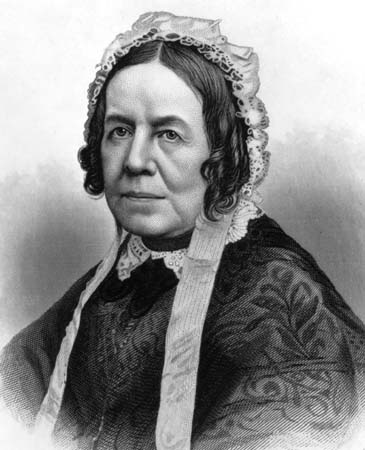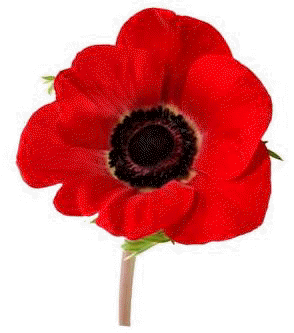Here's another true Alaskan fishing story by Stanwood teacher and commercial fisherman, guest blogger Jim Nash. (with Joan Husby)
 |
| At the set net site where the skiff capsized |
“God...help!” My prayer flashed heavenward as my body plunged into the breathtaking cold of Alaska’s Cook Inlet. I fought to the surface.
A few yards away my crew mate, Chuck Barron, sputtered, treading water. Then Chuck’s brother, Danny, popped his head up. No sign of our skiff. The safety of the beach was a half mile away. None of us wore life jackets, although they would have conserved our energy. In the late 1970s, we didn’t even own them.
At our fishing site at Coho near Kenai, cool, windy days are the norm. So at 70 degrees F., this July day had seemed hot. We wore jeans, T-shirts, and knee-length rubber boots while dragging a three-ton boulder to the water with a tractor. Such boulders made inexpensive anchors for our gill nets. I had already drilled a hole in this one for a large iron eye bolt. Then I attached a line for a buoy.
From water’s edge, I saw my young wife, Dixie, and the rest of the crew mending nets at camp on the bluff. I waved. Dixie and some of the others waved back. We knew they’d be keeping an eye on the boat. The currents ran strong here, parallel to the beach. If something happened, those on land could quickly launch another boat and speed out to help us. But what could go wrong? We were young and in tiptop physical condition. At least Danny and I were. Chuck was a little older, the father of small children. I turned to them. “All right, guys. Time to launch.”
The twenty-two foot aluminum skiff rested in its cradle behind a tractor. Danny hopped into the seat and backed the trailer into the surf. The water lifted the boat free. Then we splashed aboard, and, as the tide rose, we positioned the skiff over the boulder. We secured the line from the boulder to a sling suspended beneath the boat. I peered over the edge and checked the taut line. “Okay, let’s take it slow.”
Enjoying the sunshine and the rare warmth, we inched away from shore, towing the boulder. I angled a couple of miles up the beach toward our fishing spot.
Half a mile offshore, I cut the motor. Now all we needed to do was release the slipknots that held the sling in place, and let the boulder drop to the bottom. Easy, I thought. The worst that could happen might be a line binding as the big rock fell. That could cause the boat to ship water. Then we’d have to bail like crazy. No problem.
I stood next to the slip knot at one rail, ready with a knife in case the knot should stick. Chuck and Danny stood at the opposite rail. “Three, two, one...release!” I shouted. We yanked at the knots.
I felt mine let go. No need for the knife. Suddenly, the world flew upside down. Details registered like snapshots in my mind. I saw Chuck sail overhead, launched out of his boots, and disappear. Danny, too. Then the swells closed over my head. I knew what had happened. The other slip knot had stuck and the plummeting boulder had flipped the boat.
Loose gear bobbed to the surface in a scatter of bubbles. In warmer waters, we would have struck out for shore. But the shore was far away and the current was strong. I shivered violently. At most we had twenty minutes to save ourselves before the blood to our extremities slowed in an effort to protect heart and vital organs from the cold. Soon we’d be unable to use our hands, arms, or legs.
“We’ve got to get out of the water,” Danny said through chattering teeth.
How? I wondered. Suddenly, the skiff broke the surface beside us. With yells of relief, we swam to the overturned craft.
I shoved as Chuck tried to haul himself up on its bottom. The boat rolled under his weight. He fell back.
“Here, I’ll try.” Danny made it up, but the boat slid out from under him, too.
“Water must be leaking into one of the flotation tanks,” I said. Foam gel filled these aluminum compartments in both bow and stern. The weight of the water would destabilize the boat. We watched the gas tank and a number of small buoys float away with the current as we tried to climb onto the boat, only to slide back into the icy water. “It’s no use,” I said after ten minutes of futile effort. The others looked exhausted. Were we going to die out here? Though lightheaded and numb, I felt strangely at peace.
“Look,” Chuck gasped, gesturing toward a bright pink buoy floating between us and the shore. “If we can hang onto that, maybe we can kick our way to the beach.”
We reached the buoy and clung there. Far away on the bluff, we saw our friends clustered near the net racks. “Help!” we yelled, over and over, but no one looked our way.
“This isn’t working,” Chuck muttered. “We’re too tired to reach shore. I can’t feel my hands anymore.”
“Hold on,” I said. “There’s one more thing we can do.” We were all believers. We trusted God every day to guide and help us. As we clung to the buoy and to each other, I called aloud to God: “Father, send help, or we’ll die. But whatever you do, it’s all right with us...Just take care of our families.” An almost physical warmth flooded over me. I knew he’d heard.
For a moment, all sounds faded away. Then we heard the mutter of a small plane. I recognized a friend’s yellow Super Cub. We yelled and waved, but the plane flew on along the shore and out of sight. We groaned.
I looked back to the boat. Only the tip of the outboard stuck up. Enough water had entered the ballast tank that the boat now floated vertically, bow down with its stern a few feet beneath the surface. I swam over and pulled myself up. Holding to the outboard, I balanced thigh-deep, grateful to be partially out of the life-sucking cold.
Still clinging to the buoy, Chuck looked toward the shore. “I’m going to try it,” he said.
“Me, too,” Danny agreed.
“I know I can’t swim that far,” I told them. “God be with you guys.” The two brothers kicked for shore, pushing the buoy.
Chuck and Danny moved slowly toward the beach. Why didn’t the crew see us?
Later, we learned that unexpected company had arrived, and the watchers on shore had gathered around to visit. Not until Dixie’s cousin, Gary, asked where I was did they come to the edge of the bluff. They looked in vain for the boat.
From my precarious perch, I saw them. “Help!” I yelled, and waved.
“Boy, that seagull sounds a lot like Jim. Anybody have binoculars?” Someone handed them to Gary. He scanned the inlet. “It is Jim! They’re in the water!”
The other boats were nearby on the bluff, loaded with mended nets and their trailers already hooked to the tractors, ready for the next day’s fishing. In a frantic scramble, people tossed nets out of a boat. Rick Grossel, a wiry native Alaskan, jumped on a tractor. Four people leaped into the boat for a wild ride down the dirt road and across the beach.
Almost too cold to keep my grip on the outboard motor, I watched them launch into the water and head toward us. Chuck and Danny had stopped swimming. I saw Danny struggling to keep his brother’s head above the water.
“I’m okay,” I yelled as the boat neared. I pointed toward the others. “Take care of them first.”
When the rescuers reached the two, Chuck was barely breathing. The men in the boat pulled his dead weight over the side as Danny pushed. Then Danny almost leapt into the boat in his eagerness to get out of the water.
Back at camp and wrapped in dry blankets, I shivered violently in my wife’s embrace as I waited a turn at the hot shower.
Meanwhile, our friends pulled Chuck and Danny back from the brink of hypothermia. We didn’t know then that warming the body too quickly can force the cold blood from the extremities into the vital organs and cause a shock that can kill. But God protected us from that danger, too.
He had heard and answered our cry for help out there on Cook Inlet.
Like most commercial fishermen, I had done all I could to prepare physically and mentally for emergencies. “I’m glad I didn’t wait for trouble to strike before I prepared spiritually,” I tell people now. “Because God and I already had a relationship, I knew he’d hear me when I called. When trouble came, God gave the peace that comes from knowing he wants what’s best for me.”
Nevertheless, after our capsizing, we bought and used life jackets.
























































